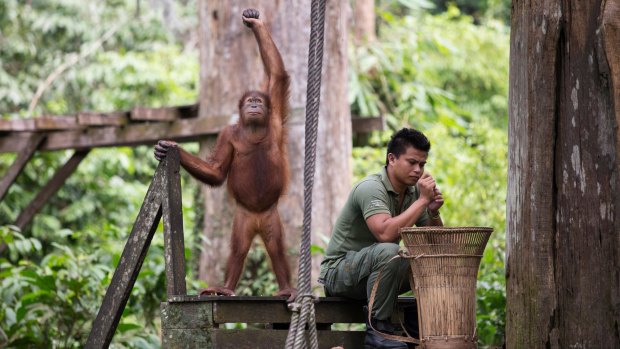
An orangutan gestures near a staff member at the orangutan sanctuary in Sepilok, in Malaysian Borneo.Credit: Alamy
Between a sprawling city of millions and a hilly village comprising a handful of families, I have looked into the eyes of hundreds of people. In 17 days I have shared food, conversation and opinions with and been photographed, danced for, laughed at and moved to tears by strangers in foreign places. But these riches of travel didn't come, in this case, from backpacking, hitch-hiking or living aboard a working fishing boat, but as a cruise passenger travelling the Malay Archipelago aboard a luxurious expedition ship. Because it's not always about how you travel, but what you do with it.
After departing Manila, MS Caledonian Sky delivered us almost daily to locations of cultural interest and natural beauty through the Philippines, Malaysia and Indonesia. At every populated port, each of us had the opportunity to step from the safe social folds of supported group travel and connect with the locals if we wished.
Unintentionally comical pronunciation of typical phrases in unfamiliar languages is, I find, a great icebreaker for conversation with complete strangers. Standing on the dock at Coron waiting for a water taxi to Kayangan Lake, I greet a line of young police officers in Tagalog, the Philippine national language. All I say is "hello", but it's enough to dissolve their composure and we chat until the boat arrives.
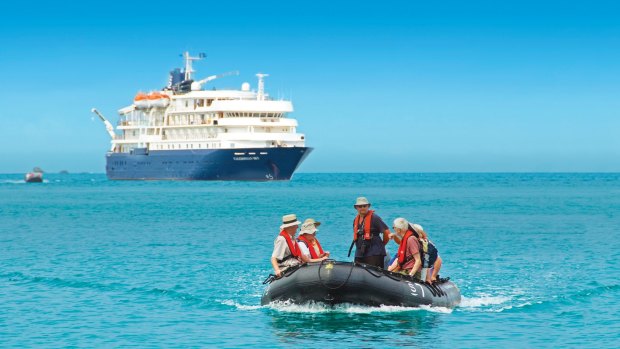
Caledonian Sky.Credit: APT
In Sandakan, Malaysian Borneo, we're let loose at the Central Market because there's time on the way back to the ship after Sepilok Orangutan and Sun Bear Rehab Centre. The market is relatively small, understated and there's little English spoken. In the fresh seafood section, teenagers kiss together colourful fish when I take my camera out, and a younger boy insists his father hold up their unsold shark jaws so he can pose with his face ringed by triangular teeth. At a spice stall, a baby and a toddler both howl at the sight of my face. Out on the street, girls taking a break at the rear of a shop shriek with excitement when I casually greet them in Malay.
The following day we have a scheduled visit to Malaysia's largest indoor market, Tawau Tanjung. Although Tawau has a population of more than 100,000, and the first British merchant ship arrived way back in 1893, we somehow seem to be a novelty. Passengers walk the few hot blocks from the dock and, as we approach the welcome shade of the fish market, smoking mongers stand and crane and hold up phones in photographic anticipation.
The multistorey market is extensive, with a whole other section dedicated exclusively to dried seafood products. I wander around, buying a few bits and pieces, happy to chat with the locals. In the backblocks of the clothing section I fall into affable debate with someone as easily as picking up a conversation left off the previous week with a good friend. Much is translated between us by the woman's teenage son, while her nine-year-old watches on with big eyes, as we all eat the food I bought earlier and she and I discuss our mutually unresolved sentiments on the Bali Nine.
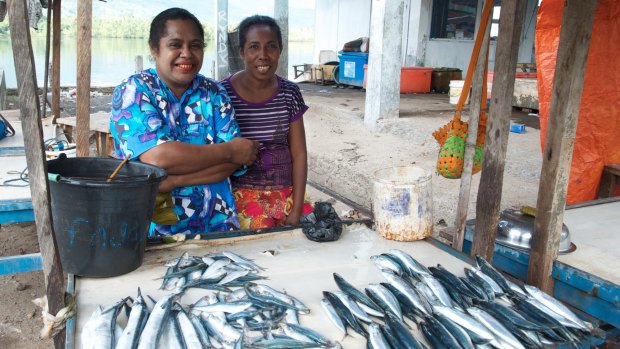
Women selling their catch at Kalabahi market on Alor, Indonesia.Credit: Elspeth Callender
For me, walking a market solo is preferable to a group or a couple. I feel far more free to be myself and sound as ridiculous as necessary to communicate.
For the Indonesian part of the itinerary, a group of guides from a large regional tour operator meet us at various destinations and sometimes travel on the ship between ports. In a small whaling village on the island of Lembata, I get chatting to one of these guides and discover she's exactly my age and happens to have been born in this village. Independent and deliberately child-free – still a radical path for a Lamaleran woman – she's openly relieved to meet and talk to another female making the same choices.
In the village of Latifui, on the island of Alor, members of the Abui Tribe, a Melanesian people, are already in traditional costume dancing the lego-lego in a circle – muscular arms wrapped around each others' shoulders – sounding an ancient chant. Women have their hair down and wear multiple ankle bangles that ring out as they collide on the beat. When we're invited to dance with them, I watch on as other passengers join the circle.
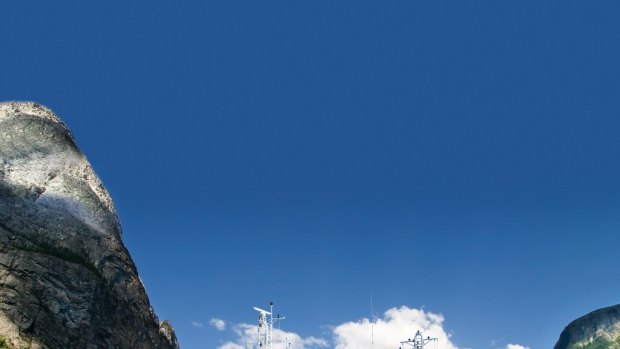
The Caledonian Sky.Credit: APT
A couple of hours earlier, in Kalabahi market nearer the port, local women with betel-nut red lips had been in hysterics, laughing at how low I had to bend to walk under their market tarps. When I straightened up in a gap, so my head and shoulders protruded like a mountain peak above clouds, one of them nearly choked on her nut wad.
My attitude towards cruising has shifted over time. I no longer mind so much that liners laden with sightseers requiring Western-style comforts on the road chug in and out of particular ports if it means natural coastlines and tropical islands are spared the smother of hotels and other tourism-related infrastructure. I also no longer believe that being a cruise passenger, especially on a small expedition ship, automatically renders you a tourist and not a traveller. It's entirely up to you.
TRIP NOTES
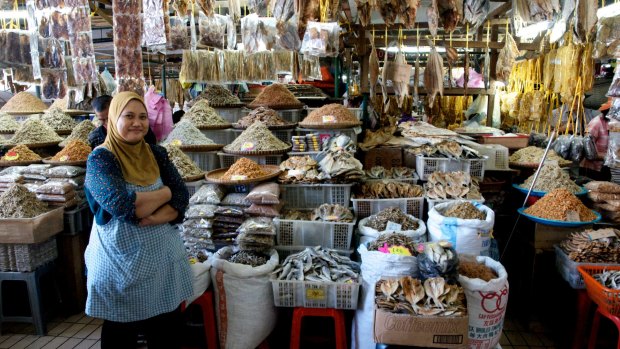
Dried seafood stall at Tawau Tanjung Market, Sabah, Malaysian Borneo.Credit: Elspeth Callender
MORE INFORMATION
CRUISING THERE
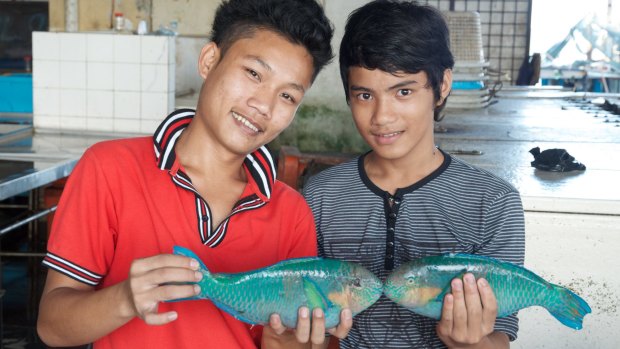
Fresh seafood section of Sandakan Central Market in Sabah, Malaysian BorneoCredit: Elspeth Callender
APT sails many of the world's seas and rivers. The company owns and operates three small ships – MS Caledonian Sky, MS Island Sky, MS Hebridean Sky – for expedition-style trips in Asia, Northern Europe and the Kimberley. Fares for the Seven Seas Odyssey, which will be called 17-day South East Asia Adventure in 2016, are from $11,995 per person, twin share. APT has an all-inclusive pricing policy. This style of cruise is not equipped to accommodate passengers in wheelchairs. Phone 1300 196 420; see aptouring.com.au
Elspeth Callender travelled courtesy of APT.
Sign up for the Traveller Deals newsletter
Get exclusive travel deals delivered straight to your inbox. Sign up now.